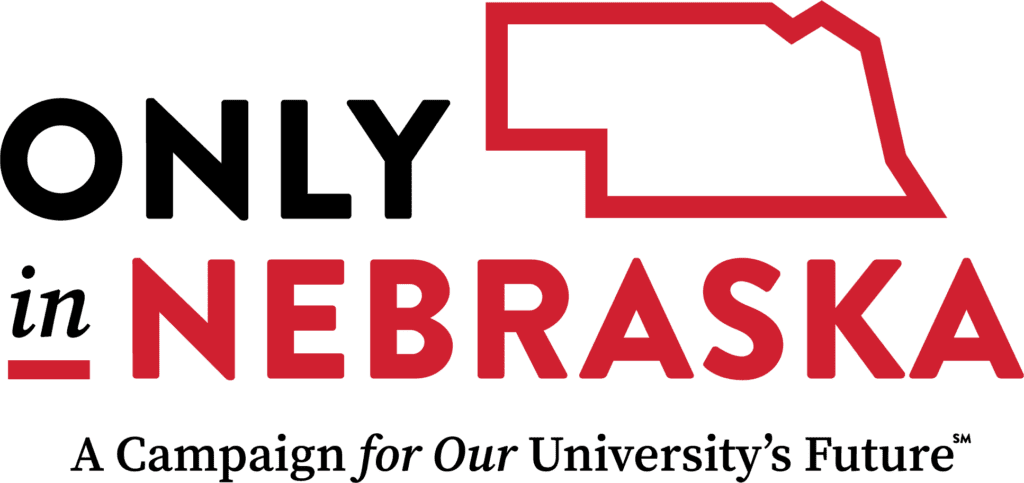Walking the path of a living legend
Recipient of the first Marlin Briscoe Athletics Scholarship at UNO shares a surprising connection to pro football’s first black starting quarterback
His job title now? Living legend.
But Marlin Briscoe, the first black starting quarterback in pro football, started his career path in a most unlikely place…
A small patch of grass in south Omaha.
That grass grew about 10 yards beyond his family’s front door in the Southside Terrace housing projects. A tree grew there, too. Day after day, year after year, Marlin would throw a football at that tree to hone his arm and his aim and his dream of becoming a black Johnny Unitas one day.
It was an unlikely dream for a black boy in the ’50s and ’60s.
He believed anyway.
Marlin lived in Southside Terrace with his sister and mother, a hard-working woman who rode the bus to work each day to clean toilets and homes in west Omaha. Their unit stood on a hill in the only area of the projects where blacks were allowed to live.
Before going to work each day, his mom would pack their cartoon lunchboxes with good food.
I cried because I had no shoes … until I met a man who had no feet.
She said that a lot.
“It became my mantra in life,” Marlin, 71, said one recent day in a phone conversation from his home in Long Beach, California. “Whenever times got tough – and I’ve had some tough times – it reminded me that I couldn’t blame anybody and I couldn’t feel sorry for myself because you just have to pick yourself up and plow through it.”
Marlin dared not cross any of the other mothers.
He laughed.
“They all raised us,” he said. “If we did something we weren’t supposed to do and my mom wasn’t home, the other moms would take care of business.”
And Marlin dared not cross the street.
An unwritten rule in those days and in those projects was that the black kids stayed and played on their side of the street, the white kids on theirs. But once they crossed 30th Street on their way to South High, their paths were allowed to merge. That was another unwritten rule. And the black kids and the Polish kids and the German kids and Hispanic kids would walk side by side and play sports together and study together and bond.
So did many of their parents, who worked side by side for $200 a week – a good wage in those days – inside the four packinghouses that formed a horseshoe around the south end of projects.
It was a lucky place to grow up.
He knows now, he says, that he wouldn’t have had the career he’s had – one so noteworthy in football and civil rights history that it’s now being made into a Hollywood movie – had he grown up anywhere other than south Omaha.
“Being part of that melting-pot existence helped me and the other kids I grew up with learn to interact with all types of individuals and backgrounds and immigration status,” he said. “You just had a potpourri of different groups of people who came to south Omaha for a better life.
“And they found it there.”
Marlin excelled in the classroom at South High as well as in sports, which he used to get a college degree at Omaha University (now UNO). In 1968, his rookie with the Denver Broncos, he became the first black starting quarterback in pro football. He set quarterback records that year. He wowed the crowd. He showed that blacks were smart enough to play quarterback.
The next year, though, he no longer was allowed to play quarterback. He asked for his release from the Broncos and switched to a position he’d never played before – receiver – soon becoming a two-time All-Pro receiver with the Buffalo Bills. He then helped the Miami Dolphins win two Super Bowls and played a major role on that 17-0 team.
He became a role model to black boys across the country, some of whom grew into living legends themselves. Warren Moon. Doug Williams. James Harris. He even became a role model to a boy who grew up to become the country’s first black president. (A few years ago, when President Obama invited that 17-1 Dolphin team to the White House, he took Marlin aside. “You were the trailblazer,” he told Marlin.)
After retiring from the NFL, Marlin hit a rough patch. He got hooked on crack and crashed for a few years. He was jailed, kidnapped. … But he picked himself up and plowed through it. He became a dean of students and a coach at schools in LA and served as director of the Watts-Willowbrook Boys & Girls Club in Compton before retiring for good a few years ago.
The Hollywood movie will show those lows and those highs.
It will show Omaha. Its people.
It will show his life in the projects.
A boy.
A tree.
A patch of grass.
A dream.
“I don’t want to be remembered just as an athlete,” Marlin said. “I hope any legacy I might have is not just because I could throw a football, but because I was able to make an impact on the lives of others, to inspire others to also overcome their obstacles and problems and get out of the quicksand and on a level playing field.
“That’s really what I’m most proud of.”
This past September, Marlin experienced another high point of his life when he returned to Omaha and UNO for the unveiling of his statue on campus and a celebration of his induction into the College Football Hall of Fame. He had no idea, he said, the event would be so big.
Or that it’d make him choke up like it did.
The event filled Baxter Arena with a melting pot of people. He looked out at the crowd and saw people of all economic backgrounds and skin tones. Some of the people he’d known since kindergarten.
Part of the job of being a quarterback, Marlin said, is to stay cool, calm and collected. But he felt he fumbled a little that night on the stage.
“Inside my blood was warm,” he said. “And a couple of times, when I wanted to say something, I got tongue-tied with emotion – it’s like you see your whole life flash before you. You think about all of the ups and downs, the ins and outs, the blacks and whites of growing up in Omaha.”
Two UNO student-athletes joined him on the stage at one point to be recognized as the first recipients of the Marlin Briscoe Athletics Scholarship. One was UNO golfer Mitch Ryan, a Millard North graduate who’d grown up in Omaha hearing the glory stories about Marlin “the Magician.” Mitch’s grandfather had attended Omaha University at the same time as Marlin.
The other student was UNO soccer player Noor Hamadi.
Noor, the son of Somali refugees, was born in Kenya and emigrated with his family to Omaha when he was 10. Like Marlin, Noor was a standout athlete at Omaha South. Like Marlin, he went on to UNO.
He speaks five languages. He dreams of a career in international business.
Noor nervously shook Marlin’s hand that night. (Later, he said he was surprised by Marlin’s strong grip.) Noor was just a few inches taller and had the same lean athletic build. Someone took their photo. They didn’t have time to talk for long before someone else pulled Marlin away.
But if they had talked more, they probably would have realized they had something amazing in common – something Marlin didn’t learn until this phone conversation:
Noor also grew up in the Southside Terrace housing projects.
“Really? That’s unbelievable!” Marlin said. “Wow. I’m beaming! That’s just icing on the cake to be able to give something back to my neighborhood.”
Noor grew up down the hill about 75 yards from where Marlin did, and Noor kicked a ball around the grass there many days, too, honing his soccer skills on the grass.
An unlikely place.
But a perfect place for dreams to take root.
“You know,” Marlin said, “some great athletes and some very accomplished citizens grew out of that small patch of grass.”
Student support is one of the priorities of the University of Nebraska’s Our Students, Our Future fundraising initiative, which is helping to make better futures for us all. The two-year, $200 million initiative seeks gifts in support of students and goes through 2017.
If you would like to help promising students like Noor make the world a better place, please contact the University of Nebraska Foundation at 800-432-3216 or send us a message.





